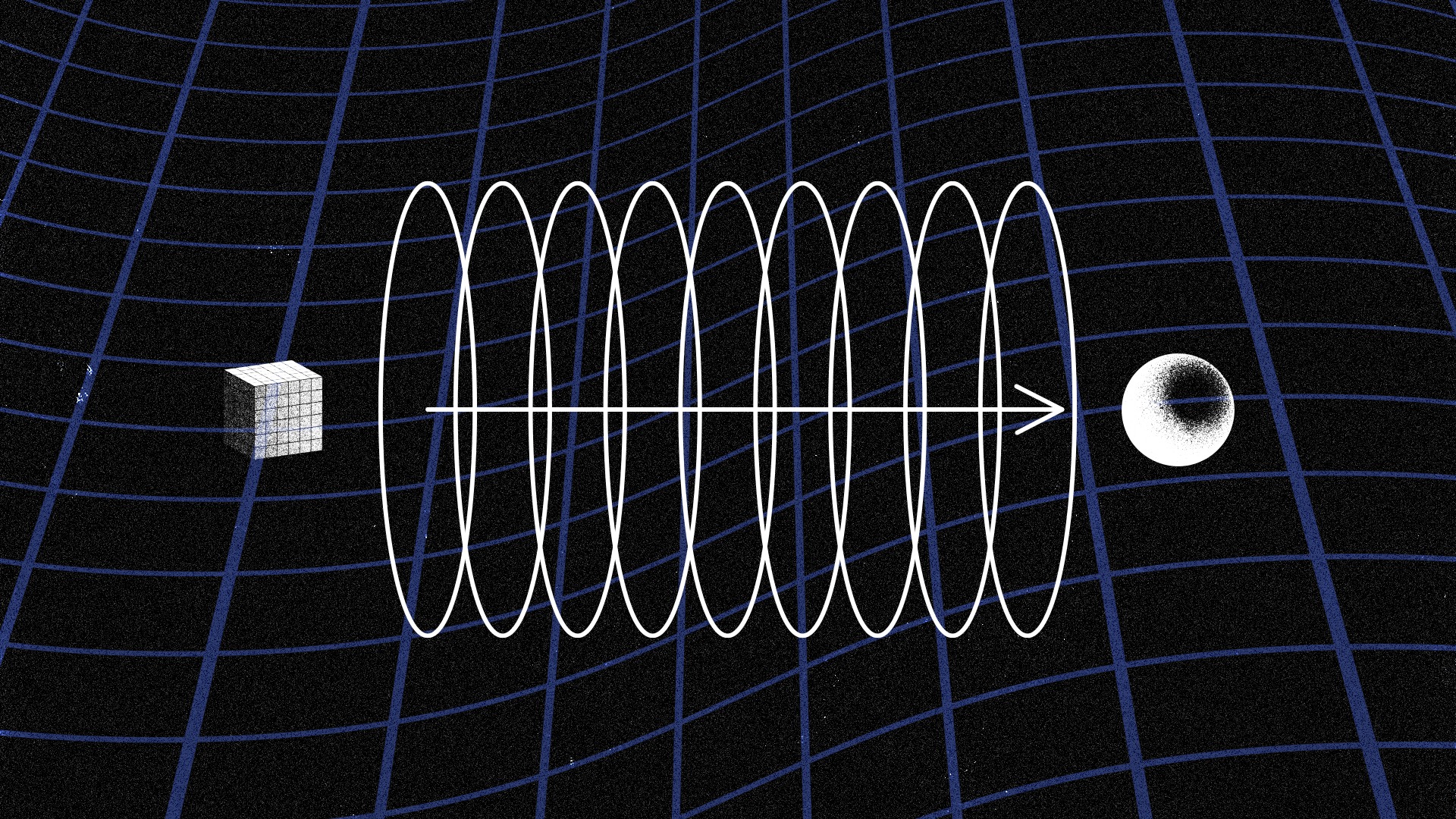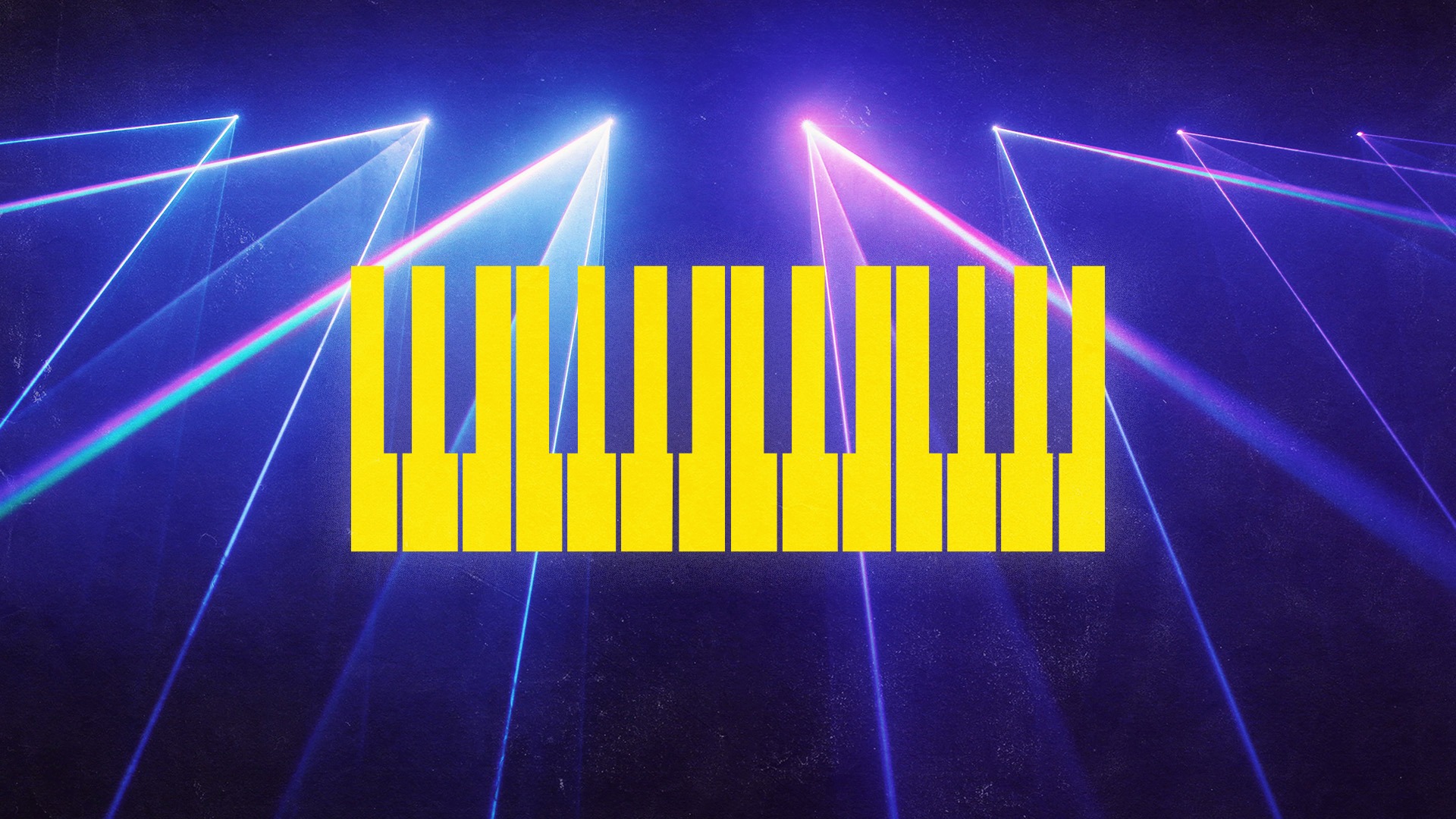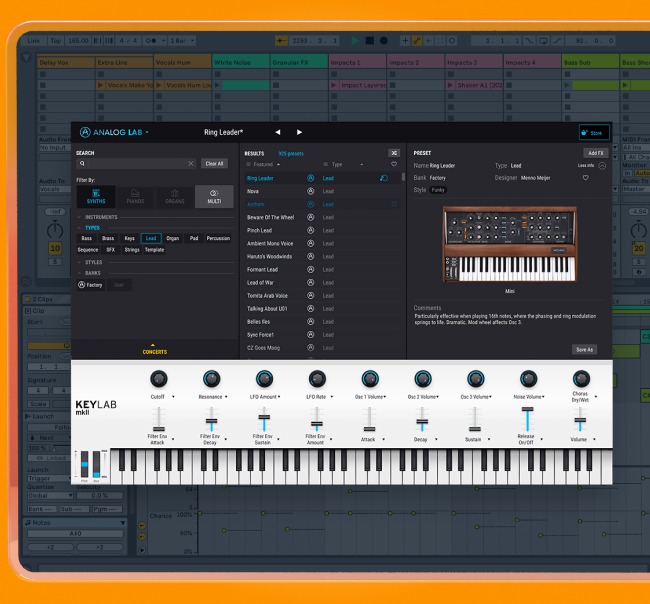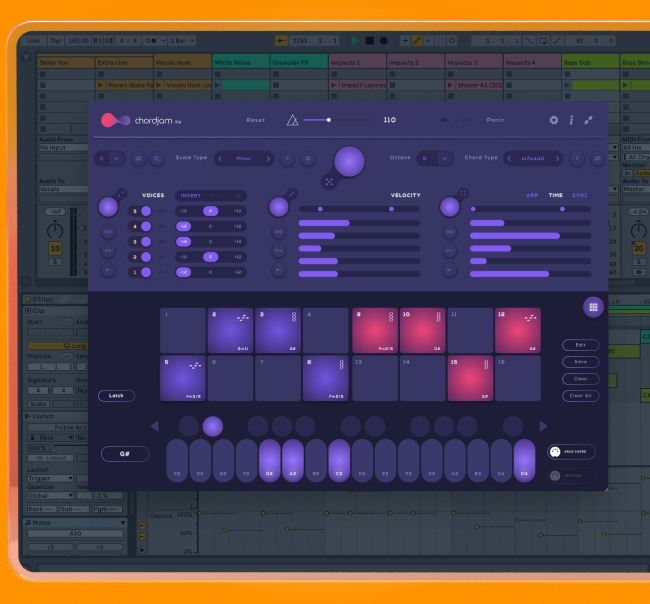
EDM Production: How to Make an EDM Track in 9 Steps

EDM production isn`t as challenging as it seems. While it takes time to learn music production, writing and creation—the best way to learn how to make EDM is to simply start writing a track.
To make your first EDM track you just need a little bit of inspiration and the knowhow to move through the process of creating a fully fledged song.
The truth is, learning to write EDM doesn’t take a ton of theory or music production knowledge, if you’re just getting started.
By following these basic songwriting, mixing, music production and sound design principles you’ll have everything you need to make EDM tracks that sound great.
Let’s dive in!
How to make an EDM track in 9 steps
Before you get started, you’ll need a few things first. EDM is definitely easiest to make with software tools on a laptop or computer that can handle audio production software.
You’ll need a DAW, synth plugins, access to decent samples and a few mixing tools.
Especially if you don’t have keyboard skills, punching notes into the MIDI roll of your DAW is your best friend, so get acquainted with how your DAW works.
For this genre of music, DAWs like Logic, FL Studio and Ableton Live are great options with user-friendly workflows.
1. Start with a drum beat
EDM drums are big and bombastic, the kicks and snare are huge in sound—but fortunately, compared to other genres like trap or drum and bass, the rhythms generally quite simple.
In most cases EDM drums use a four-on-the-floor, quarter note kick pattern.
EDM snares typically double up with the quarter note kick or play faster eight and sixteenth-note sub-divisions as they build up towards a drop section.
Sometimes the snare snares and kick will switch to a half-time feel in dubstep influenced contexts.
The hi-hats and crashes often are the same and are used sparsely to either build or release tention towards or during a drop section.
Again, like most aspects of EDM production, the arrangement, sound design and sample selection of your drums will be what makes the track hit harder, not the rhythms themselves.
Start with a drum loop, or a drum MIDI pattern and you’ll have an inspiring bedrock on which you can start writing your melodic ideas.
In this example I simply dropped a basic EDM inspired kick and snare pattern, as a way to get started quickly.
2. Creating a bassline
A lot could be said about writing an EDM bassline—that’s because the bassline is pretty important in EDM!
From a music theory perspective, you’re bassline will determine your chord progression.
That’s because, the bassline at minimum is expected to highlight the root of each chord in your track’s chord progression.
From there you can add chord tone embellishments and rhythmic ostinatos to enhance your bassline.
My suggestion is to set up your MIDI roll, keyboad or controller to a minor scale pattern and start writing ideas out.
Once you come up with something dancy and fun, do some editing and make it loop nicely every 16 bars.
Alternatively, you can always look for bass loop samples or bass MIDI patterns as sources of inspiration.
I wrote this bass line by messing around the E minor scale, adding octaves here and there for rhythmic interest.
3. Add chords
While starting with a chord progression is a great way to inspire melody ideas—it’s generally easier to write chords to a bassline.
Once you have a bassline idea written down in your DAW’s MIDI roll, try to find a key centre and use that as the basis for your chords.
With the a central key, work out chord changes by listening to where the melody wants to go chord wise.
Finally you can add interest to your chords by adding extensions or playing around with pedal tones.
Use the MIDI roll and get creative. Remember if it sounds good, it is good!
Here`s a basic chord progression i wrote using triads that follow the root tones of my bass line. Later on I can go back and add chord extensions and voice leading for extra flare.
4. Write a melody
Melody writing can be tough. It can take a lifetime of practice to truly master melody writing, even if you have a ton of natural talent.
But there’s a few tools at your disposal to learn how to write catchy melodies that hook a listener’s attention.
A great start is by learning your major and minor scales before upping your game with modal scale knowledge.
Another tool great songwriters use is by using the voice memo function on their phone to record melody line ideas by singing whenever inspiration hits.
Knowing your scales will help you pick out melodies faster and apply them to a key or chord progression. Plus they can help you recognize how other producers wrote their melodies faster.
I wrote this melody by switching the keyboard scale to E minor, then I riffed around the top of the scale while playing a descending pattern.
5. Arranging build-ups, drops and peaks
Let’s take a look at EDM song arrangement now.
In a lot of cases EDM songs will have a minimal intro that slowly builds into a more full A section.
In most EDM music, producers tend to keep building their tracks up towards a drop section, where much of the drums, keys and bass cut out leaving the listener feeling momentarily suspended.
Of course, producers use the drop section to play sparse percussion or a vocal sample to build anticipation for bringing back a full, highly danceable beat as part of section B.
An EDM track can have multiple section riffing on different ideas around the main melody line, with various and dancier sections for the main chorus.
Here’s an example of a common EDM song structure: intro – A section – build-up – drop – B section – build-up – drop – C section – outro.
As you go through process of creating a track, keep arrangement in mind as you start to find and develop ideas for various sections.
In this drop example, I`ve cut away everything to make room for a reverb snare drum that drops out before quickly going into a heavier beat with the original motif.
6. Layer lead synths
Okay cool, you have drums, bass, chords, and a melody sketched.
That’s great, but now its time to get into easily one of the most important aspects of making EDM music—synthesis and sound design.
Synths are super fun to play around with, but they can be a bit complicated if you’re trying to create a particular sound.
So if you’re relatively new to sound design, you might be best off getting a plugin that comes with a ton presets that you can layer on duplicate instances of your lead melody.
To write a synth part for a melody, you’re likely looking for a lead synth, so look for lead presets and choose something that suits the sound of whatever you’re going after.
7. Use polyphonic synths when writing chords
Pianos sound nice, but you’ll probably want use a polyphonic synth pad to play your chord progression.
For this part you’ll want to find a synth plugin or preset that is polyphonic—meaning it can play multiple notes at a time to a form a chord.
Leads are typically monophonic, so you’ll instead want to look in the pads and keys section of your plugin’s preset folder.
Or if you have more advanced knowledge of synthesis, you’ll want to pick pick out a quality polyphonic synth like a DX7, Juno or Prophet-5 for example.
8. Synth sound design
The music theory concepts that go into creating EDM aren’t as complicated as other genres like Jazz or R&B, the sound design and mixing of an EDM track can be fairly complex.
We’ve delved into various forms of synthesis and sound design in past articles, but here’s a few basic concepts to learn if you’re wanting to grow your synth knowledge.
Firstly there are various kinds of synthesis: subtractive, additive, FM, wavetable and granular.
You also need to understand how monophonic synths are used, compared to where polyphonic synths are more useful.
There’s also different waveforms you can use in synthesis—sine, saw tooth, square and their respective modulations. Not to mention ADSR curves, EQs, mod matrixes…
It gets complicated pretty fast if you start going down the rabbit hole.
The good news is that playing with synth parameters is super fun by nature—and its the best way to start learning synthesis.
Plus you can always start with a preset that’s close to the sound you’ve imagined.

Anthony goes through the basics of synth sound design and ADSR envelopes.
9. Don’t be afraid to use loops, samples, MIDI and plugins
EDM is in many cases a sample based genre. Most of the drums, risers, ambient effects and vocal chops that producers come from samples—usually found on royalty-free sample libraries.
Not to mention how useful and inspiring melody and chord loops can be for starting a new track.
MIDI packs are also another great source of inspiration because the put the chords you need to write a track straight into the MIDI roll, making it simple to immediately dive into melody writing, arrangement and sound design.
And synth plugins with presets are a great way to get started with learning sound design basics if you’re new to synthesis.
So don’t be afraid or embarrassed about employing modern software to get started, with the right tools you can write an amazing track.
Finalize your track
When you finished the arrangement and sound design of your track it’s time to both celebrate and move into the mixing and mastering process.
We’ve written extensively about how mixing and mastering work, so head over and check out those guides if you’re looking to learn the basics.
There’s no right or wrong way to make music, this is just a guide that shows how the various elements of a song fit together.
You don’t always have to start a song with a drum beat, it’s really just about starting somewhere inspiring to you and building out your ideas.
There’s no rules and at the end of the day its all about making something that sounds good and satisfies your creative itch.
So get out there and start writing your next EDM tune!
Gear guides, tips, tutorials, inspiration and more—delivered weekly.
Keep up with the LANDR Blog.










